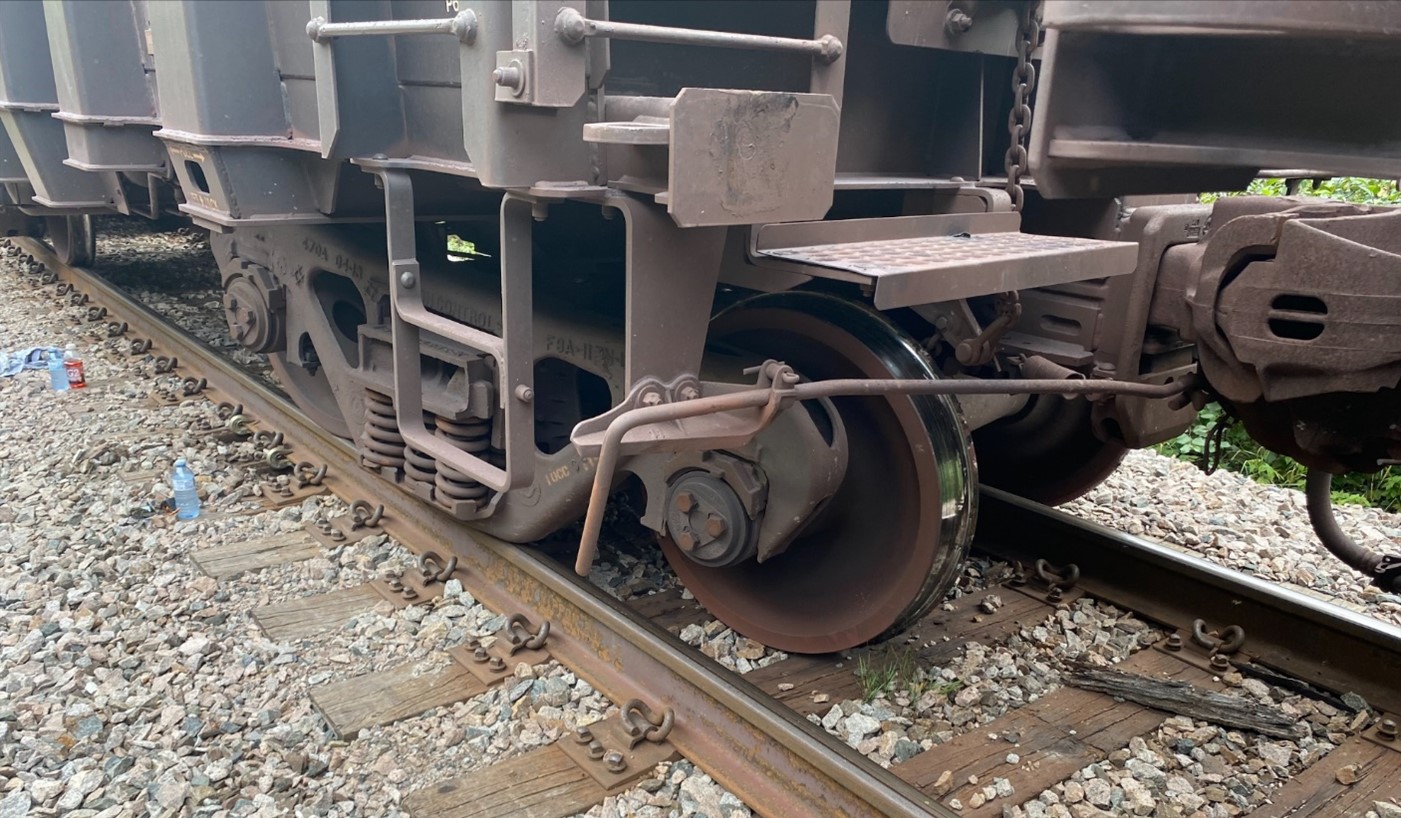09 November 2022
Director General, Rail Safety, Transport Canada
Enterprise Building, 14th floor
427 Laurier Avenue West
Ottawa ON K1A 0N5
Subject :
Rail Transportation Safety Advisory Letter 04/22 (TSB occurrences R22Q0095 and R22Q0062)
Procedures and guidelines relating to train operations
On 29 August 2022, at approximately 1300,Footnote 1 Quebec North Shore and Labrador Railway (QNS&L) train CL-560S507, consisting of 3 locomotives equipped with alternating current (AC) traction motorsFootnote 2 and 240 empty gondola cars, was proceeding northward on the Wacouna Subdivision approaching Nicman Station, Quebec, located at Mile 35.1. The train was 8900 feet long and weighed 6480 tons.
The locomotive engineer (LE) was required to be prepared to stop south of Nicman since he had received a Clear to Stop signal indication at the previous signal (Signal 321).Footnote 3 In addition, between Mile 31.99 and Mile 32.22, the LE was required to maintain the restricted speedFootnote 4 in accordance with a general bulletin order.
The train was travelling at approximately 14 mph when it rounded a curve as it approached the controlled locationFootnote 5 south of Nicman. When the LE saw Signal 337 displaying a Stop indication, he applied full dynamic braking on the lead locomotives over a very short period of time and made a minimal automatic brake application to bring the train to a stop before the signal.
This braking action did not allow the cars’ slack to adjust, which generated excessive compressive forces in the train,Footnote 6 resulting in the derailment of the 160th car and in an emergency brake application (Figure 1). When the train came to a stop, the lead locomotive was 750 feet from Signal 337.
The LE had been employed with QNS&L since 25 November 2020, and had successfully completed the QNS&L training for LEs. He met rest and fitness standards.
Another similar event occurred on 07 June 2022.Footnote 7 Train CL-379D, consisting of 3 locomotives with AC traction motors and 240 cars, derailed in Oreway, Newfoundland and Labrador, during a switching operation, jackknifing 4 cars and damaging 22 others (Figure 2). The LE, who had approximately 4 years of experience, had applied maximum dynamic braking over a very short period of time and made a minimal application of the automatic brakes. This manoeuvre did not allow the cars’ slack to adjust and generated excessive compressive forces in the train.
The dynamic braking system on QNS&L locomotives equipped with AC traction motors can generate a retarding force of up to 105 kips per locomotive.Footnote 8 Since this retarding force is concentrated at the head end of the train, modulating the braking intensity is essential, particularly with AC locomotives, to allow the train slack to adjust and keep the in-train forces within safe limits.
Although the QNS&L General Operating Instructions contain guidelines for the use of air brakes and warnings about slack action when operating trains, there are currently no specific instructions for the use of dynamic brakes, particularly on AC locomotives.
To ensure safe train operations, Transport Canada may wish to consider reviewing QNS&L’s procedures and guidelines for the use of dynamic braking, especially when operating trains that are equipped with locomotives with AC traction motors.
The TSB is seeking Transport Canada’s view on these safety deficiencies and would like to be informed of the action taken, if any, in this regard.
Under the TSB Policy on Occurrence Classification, the circumstances of the occurrences were assessed, and the occurrences were categorized as Class 5 investigations.
Sincerely,
Original signed by
Vincenzo De Angelis
Director, Investigations (Rail/Pipeline)
CC.
-
Director General
QNS&L Railway

